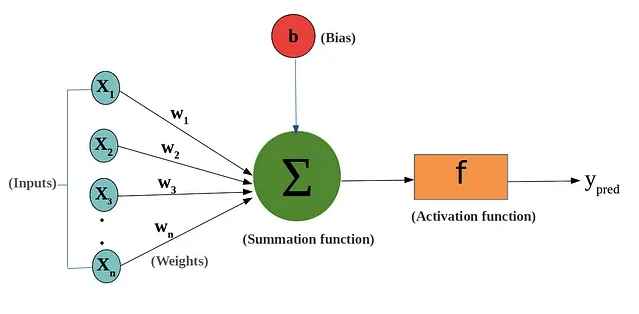Generative AI utilizes a deep neural network, relying on significant computational power, algorithms for generating new examples from existing data, and a feedback mechanism that adjusts learning based on outcomes.
This entails interconnected layers of artificial neurons (input, hidden, and output layers), each extracting and processing information from received inputs.
What role do layers in a neural network play?
Layers in a neural network can be termed as the ‘brains’ in the generative AI network 🧠. The input layer receives raw data and feeds it forward for further analysis. Hidden layers contain interconnected nodes performing operations on incoming data, like applying weights, summation, and activating functions. The output layer, on the other hand, generates a result based on processed data from the hidden layers.
The systematic data transfer and operation from input to output layers mimic human decision-making, enhancing the intelligence and capability of generative AI.

What is the significance of weights and biases in the network?
Weights and biases, typically initialized randomly, significantly impact the network’s performance. Weights define a node’s influence on the next, while biases ensure activation even with zero inputs.
Neural network learning adjusts these weights and biases through backpropagation. This fine-tuning is vital for accurate predictions and for generating new patterns in generative AI, resembling the original data.

Why is a feedback mechanism vital in neural networks?
A deep neural network relies on a feedback mechanism, consisting of a loss function and an optimization algorithm.
The loss function gauges the disparity between actual and predicted output, providing insight into the network’s task performance. The optimization algorithm then uses this loss value to adjust the weights and biases during backpropagation.
The feedback mechanism enables the neural network to improve iteratively, steadily approaching a more accurate output with each iteration.
What constitutes a Generative AI model?
To implement a deep neural network in generative AI technologies, models like Generative Adversarial Networks (GANs) or Variational Autoencoders (VAEs) can be employed. GANs, for instance, consist of two deep neural networks—a generator that produces new samples, and a discriminator that evaluates the quality of these samples.
The two networks iteratively improve through training, with the generator aiming to produce samples that the discriminator can’t distinguish from real data.
In the context of our current discussions, you can refer to the article “The Fundamental Elements of a Deep Neural Network in Generative AI” for a more comprehensive understanding.
Conclusion
In conclusion, the deep neural network’s operation in generative AI includes multiple interconnected layers for extracting and processing information, weights, and biases to affect the operation of these networks, and a feedback mechanism for continuous improvement.
Models such as GANs demonstrate the implementation of such a network in creating new data that closely resemble the original data.
Implementing these elements correctly and astutely can be central to enhancing AI’s capability in various domains such as automation of content creation and streamlining the data-driven decision-making process. 🚀
- Burnout in Remote Teams: How It’s Draining Your Profits - January 27, 2025
- Signs You’re Understaffed - January 20, 2025
- The Cost of Silence: Communicating Negative Feedback - January 13, 2025
